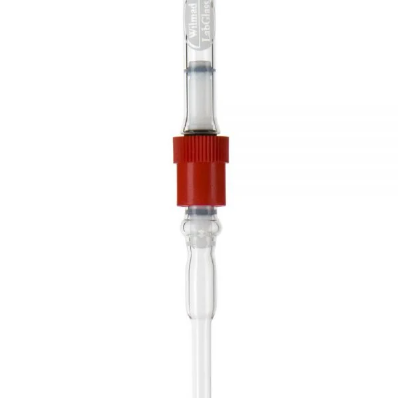
10mm Thin Wall Precision Low Pressure/Vacuum NMR Sample Tube 7″ L
| 판매가격 | 309,300 원 |
|---|
| 카탈로그 NO. | 513-7LPV-7 |
|---|---|
| 제조사/원산지 | Wilmad-LabGlass / |
| 제품사양 정보 |
카탈로그 다운로드
Order Information
| Catalog No. | Description | 브랜드 | 단위 | 소비자가 | 추가 |
|---|---|---|---|---|---|
| Catalog No.513-7LPV-7 | Description10mm Thin Wall Precision Low Pressure/Vacuum NMR Sample Tube 7″ L, 500MHz | 브랜드Wilmad | 단위EA 1 | 소비자가309,300원 |
Low Pressure/Vacuum (LPV) 10 mm OD NMR Tube
Try our family of novel low pressure/vacuum tubes for NMR and EPR experiments as an alternative to other similar tubes. A 4X larger sealing surface eliminates leaks and greatly increases its lifetime when compared to traditional gas-tight tubes. It continues to offer a convenient flame-free sealing solution for air sensitive or volatile liquid samples at any pressure from vacuum to pressure slightly above 1 bar.Featured highlights: Greaseless PTFE piston provides a 100% contamination-free seal.Axial symmetric design guarantees its application in spinning experiments.More economical to reduce experimental costsReliable – standard sizes can ship within 1-2 business days after receipt of order.Spare/replacement Pyrextube available*For custom lengths contact Customer Service.
Details
*Note: Replaces Part Number 727-LPV-250MSQ; item is identical.10mm OD NMR Tubes
Specifications
- MHz:500
- OD / Lgth:10 / 7
Application Notes
*LPV Tubes consist of 3 parts – 5 mm Pyrex® vacuum adapter, 5 mm PTFE vacuum lock valve and piston assembly and an NMR tube with the threaded glass section sealed on; also known as the spare tube.For Spare Tube orders the original LPV part number must be specified; i.e. 528-LPV-7 as “X” denotes the style (528) and length (7″).Important Note:Product numbers that include “PQ” belong to our Precision Tube Family with an OD and ID tolerance of 0.013 mm. Those with “SQ” are not Precision and their OD and ID may vary as much as 0.4 mm. For EPR experiments that must estimate electron spin density and/or produce highly repeatable signal amplitude between different runs we strongly recommend our Precision EPR Tube. Due to the nature of glass, Extreme Caution should be exercised when using at elevated or reduced pressures since a tiny scratch on the glass surface would significantly lower the tensile strength. Adequate safety shielding should always be used when working in these conditions.






